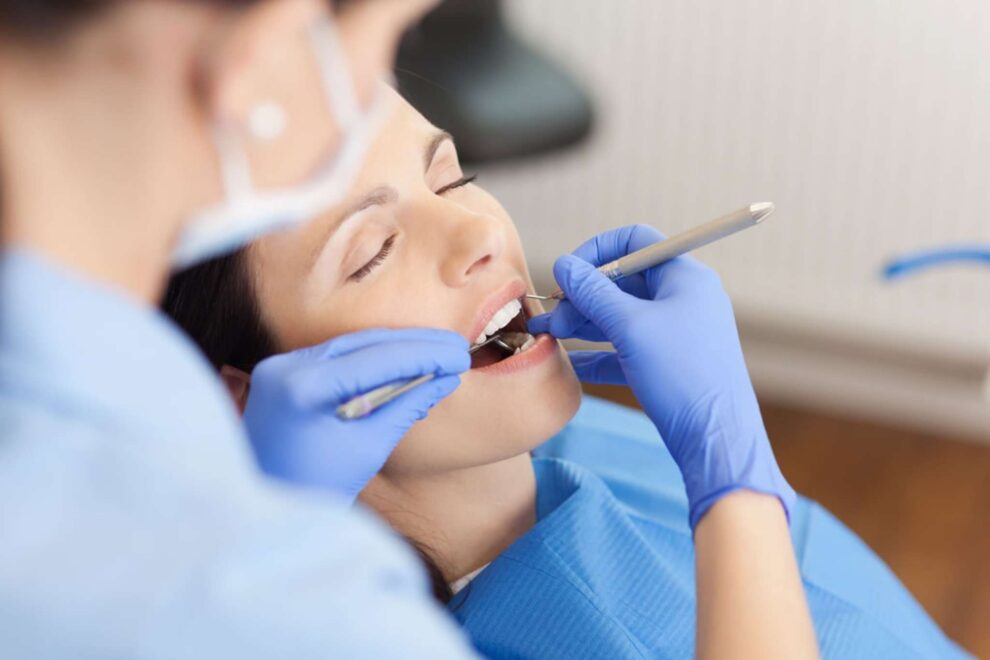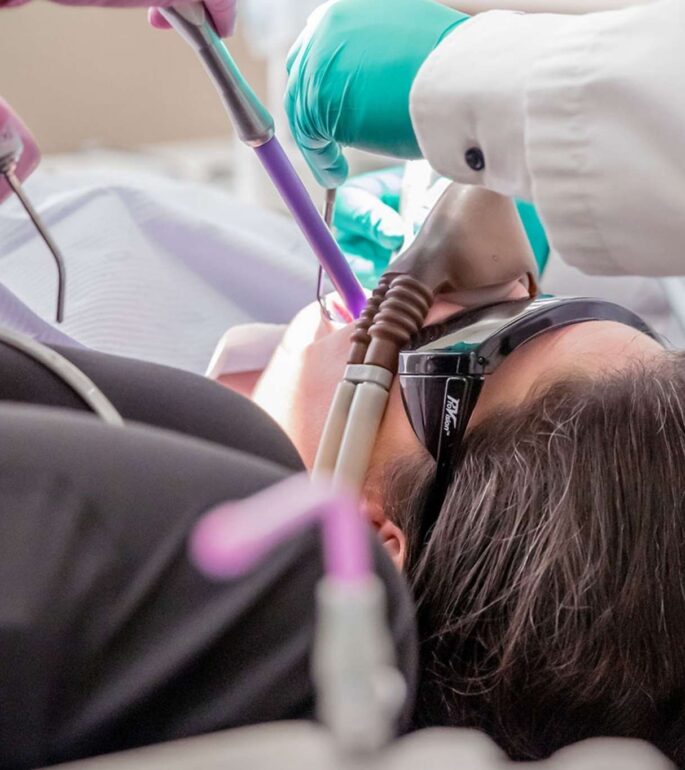What is Sedation Dentistry?

What is sedation dentistry?
Sedation dentistry uses medications to help patients relax during dental procedures. This is sometimes called the "sleep dentistry", even if it is not accurate.
Patients are normally awake, except for patients under general anesthesia.
Sedation dentistry uses medications to help patients relax during dental procedures. This is sometimes called the "sleep dentistry", even if it is not accurate.
Patients are normally awake, except for patients under general anesthesia.
The level of sedation used includes:
(formerly called "conscious sedation") - you can say your words while speaking and you may not remember most of the operation.
You are on the verge of consciousness, but you can still be awake.
You are completely unconscious.


The accompanying sorts of sedation are utilized in dentistry:
What Types of Sedation Are Used in Dentistry?
You breathe nitrous oxide: otherwise known as "laughing gas" -- combined with oxygen through a mask that's placed over your nose. The gas helps you relax. Your dentist can control the amount of sedation you receive, and the gas tends to wear off quickly. This is the only form of sedation where you may be able to drive yourself home after the procedure.
Why OG Dental Clinic?
Our doctors include highly qualified male and female practitioners who come from a range of backgrounds and bring with a diversity of skills and special interests.
Our administration and support staff all have exceptional people skills and trained to assist you with all dental enquiries.
Contact our friendly reception staff with any general or medical enquiry.
FREE 4*HOTEL (Incl. Breakfast)
FREE VIP-Transfers
FREE X-Ray
FREE Local Anesthesia
FREE Expert Examination and Consultation
24/7 Support

Get Your Free Quote
Please feel welcome to contact our friendly customer staff with any general or dental enquiry call us.
Opening Hours
Monday - Friday 8.30 - 7:30 pm
Saturday9.00 - 4.00 pm
Sunday Closed
DISCOVER IZMIR
THE MOST BEAUTIFUL CITY OF TURKEY
İzmir, historically Smyrna, city in western Turkey. The country’s third largest city and one of its largest ports, İzmir lies at the head of the sheltered Gulf of İzmir on the deeply indented coast of the Aegean Sea.
İzmir is one of the oldest cities of the Mediterranean world and has been of almost continuous historical importance during the last 5,000 years.
İzmir is one of the oldest cities of the Mediterranean world and has been of almost continuous historical importance during the last 5,000 years.
HISTORY AND HOLIDAY
The city’s landmarks include the partly excavated remains of its agora and the ancient aqueducts of Kızılçullu. The archaeological museum has a fine collection of local antiquities. Situated near such famous ancient sites as Ephesus and Pergamum and numerous holiday resorts, İzmir has a growing tourist trade. İzmir is located in one of Turkey’s most densely populated areas.
Thousands of our patients from all over the world have had the OG Smile!


2307 Beverley Rd Brooklyn, New York 11226 U.S.

2307 Beverley Rd Brooklyn, New York 11226 U.S.

2307 Beverley Rd Brooklyn, New York 11226 U.S.
As OG Dental Clinic, we are here for you to leave our clinic happily and return to your home with your bright and perfect smile.
OG Dental Clinic was founded Dt. Ozan Güner. He has 25 years of experience in dentistry.
We offer you the best dental treatments with affordable prices.
OG Dental Clinic was founded Dt. Ozan Güner. He has 25 years of experience in dentistry.
We offer you the best dental treatments with affordable prices.
Quick Contacts
If you have any questions or need help, don't hesitate to contact with our team.
Appointments
2025 All Rights Reserved. | Designed by İzmir Reklam Ajansı - La' Mira Creative




